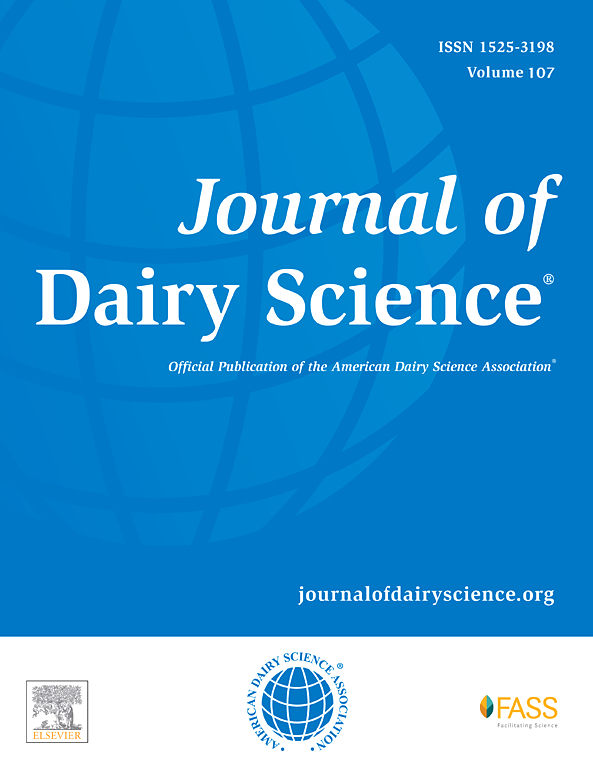从随机饲料需求前沿估算饲料效率
IF 3.7
1区 农林科学
Q1 AGRICULTURE, DAIRY & ANIMAL SCIENCE
引用次数: 0
摘要
饲料占畜牧业生产成本的 40% 至 70%。因此,提高生产动物的饲料效率将促进农场盈利。为此,精确估算动物的饲料效率非常重要。考虑到剩余采食量(RFI)作为动物饲料效率指标的一些局限性,建议采用另一种方法。该方法涉及随机饲料需求前沿(SFRF)的估算,在同一规格中明确考虑饲料效率和统计噪声。因此,随机饲料需求边界自然会产生不含统计噪声的饲料效率指标。此外,它产生的饲料效率指标是非负的,而且可以很容易地用饲料效率低下导致的剩余采食量(SFI)来表示。模拟实验用来说明基于 RFI 的饲料效率估算所产生的问题,以及替代方法所能带来的改进。实验结果表明,RFI 往往会高估动物的饲料效率。随着饲料低效率对采食量变化的影响增大,高估的情况会越来越严重。实验结果还表明,SFRF 提供了一致的饲料效率估计值和相关的 SFI。最后,介绍了替代方法在动物饲料效率估算方面的进一步优势。本文章由计算机程序翻译,如有差异,请以英文原文为准。
Feed efficiency estimation from stochastic feed requirement frontier
Feed accounts for 40% to 70% of livestock production cost. Therefore, improving feed efficiency of production animals will promote farm profitability. To this end, precise estimation of animal level feed efficiency is important. Considering some limitations of residual feed intake (RFI) as indicator of animal level feed efficiency, an alternative approach is suggested. The approach involves estimation of a stochastic feed requirement frontier (SFRF), which explicitly allows for feed efficiency and statistical noise in the same specification. As a result, a SFRF naturally leads to feed efficiency indicator free from statistical noise. Furthermore, the feed efficiency indicator it generates is nonnegative and it can easily be expressed in terms of surplus feed intake (SFI) caused by feed inefficiency. Simulation experiment was used to illustrate the problems that arise from RFI-based feed efficiency estimation and the improvements that can be expected from the alternative approach. The experimental results showed that RFI tends to overestimate feed efficiency of animals. The overestimation gets worse as the contribution of feed inefficiency to feed intake variation increases. The results from the experiment also showed SFRF provides consistent feed efficiency estimates and associated SFI. Finally, further benefits of the alternative approach in feed efficiency estimation at animal level are presented.
求助全文
通过发布文献求助,成功后即可免费获取论文全文。
去求助
来源期刊

Journal of Dairy Science
农林科学-奶制品与动物科学
CiteScore
7.90
自引率
17.10%
发文量
784
审稿时长
4.2 months
期刊介绍:
The official journal of the American Dairy Science Association®, Journal of Dairy Science® (JDS) is the leading peer-reviewed general dairy research journal in the world. JDS readers represent education, industry, and government agencies in more than 70 countries with interests in biochemistry, breeding, economics, engineering, environment, food science, genetics, microbiology, nutrition, pathology, physiology, processing, public health, quality assurance, and sanitation.
 求助内容:
求助内容: 应助结果提醒方式:
应助结果提醒方式:


